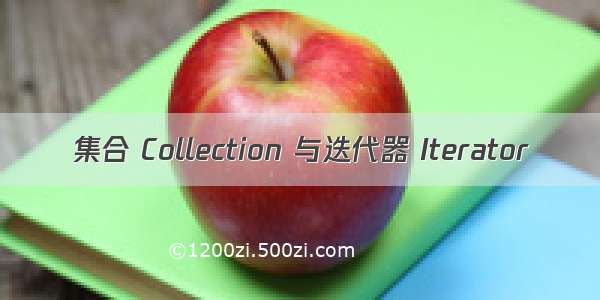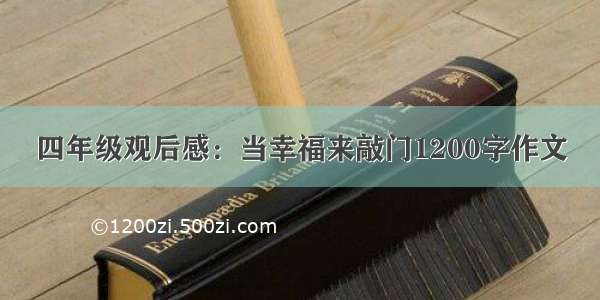
一、java.util.List1、List总结 List中允许保存重复的数据;List中允许保存多个null;常用实现类:ArrayList【推荐使用】、Vector、LinkedList;List中数据是有序的,按照数据添加顺序进行排序;由于List是有序的,因此List新增加了一个方法:Eget(intindex),【Collection、Set接口均没有get(int index)方法】。 2、ArrayList和Vector的区别 (1)ArrayList和Vector,都是List接口的实现类。
(2)ArrayList和Vector都是用数组实现的,主要有以下几个区别:
Vector是多线程安全的,线程安全就是说多线程访问同一代码,不会产生不确定的结果。而ArrayList不是,这个可以从源码中看出,Vector类中的方法很多有synchronized进行修饰,这样就导致了Vector在效率上无法与ArrayList相比;两个都是采用的线性连续空间存储元素,但是当空间不足的时候,两个类的增加方式是不同。Vector可以设置增长因子,而ArrayList不可以。Vector是一种老的动态数组,是线程同步的,效率很低,一般不赞成使用。
(3)适用场景分析:
Vector是线程同步的,所以它也是线程安全的,而ArrayList是线程异步的,是不安全的。如果不考虑到线程的安全因素,一般用ArrayList效率比较高。如果集合中的元素的数目大于目前集合数组的长度时,在集合中使用数据量比较大的数据,用Vector有一定的优势。 3、Vertor向量类型数据输出:Vertor --> Iterator|Enumeration Java.util.Vertor是JDK1.0中设计的向量类型。后来在JDK1.2中新增了Collection、List、Set接口,为保持集合统一型,修改Vertor类的定义,使其实现了List接口。与新集合的实现不同,Vertor是同步的。 Java.util.Enumeration是JDK1.0中定义的接口,和Java.util.Iterator(JDK1.2出现)迭代器功能类似。其中Enumeration接口包含两个方法: hasMoreElements():测试此枚举是否包含更多的元素。nextElement():如果此枚举对象至少还有一个可提供的元素,则返回此枚举的下一个元素。
public class Test {public static void main(String[] args) {List<String> vertor = new Vector<String>();vertor.add("A");vertor.add("B");vertor.add("C");//输出数据:使用迭代器IteratorIterator<String> iterator = vertor.iterator();while (iterator.hasNext()){String data = iterator.next();System.out.println(data);}System.out.println("*******");//输出数据:使用EnumerationEnumeration<String> enumeration = ((Vector<String>) vertor).elements();while (enumeration.hasMoreElements()){String data = enumeration.nextElement();System.out.println(data);}}}
//程序运行结果:ABC*******ABC
二、Java.util.Set1、Set总结 API描述:一个不包含重复元素的 collection。更正式地说,set 不包含满足e1.equals(e2)的元素对e1和e2,并且最多包含一个 null 元素。正如其名称所暗示的,此接口模仿了数学上的set抽象。 Set不允许保存重复的数据【不同实现类,对重复数据的评定标准不一样】;常用实现类:HashSet、TreeSet;HashSet允许保存一个null,TreeSet不允许保存null;HashSet中的数据是无序的;TreeSet中的数据是有序的,数据按照升序排列【通过调用数据元素的compareTo()方法进行排序,因此数据元素需要实现Comparable接口,否则会抛出ClassCastException异常】。 2、HashSet中,数据重复的评定标准:当且仅当( e1.hashCode() == e2.hashCode() )&& e1.equals(e2)为true时,才认定e1和e2重复。(1)数据重复测试一:e1.equals(e2)为true时,hashCode()值必然相同的情况
/*** 按照规范重写Book类的equals()方法、hashCode()方法*/class Book {private int price;private String name;public Book(int price, String name) {this.price = price;this.name = name;}@Overridepublic boolean equals(Object o) {if (this == o) return true;if (o == null || getClass() != o.getClass()) return false;Book book = (Book) o;return price == book.price &&Objects.equals(name, book.name);}@Overridepublic int hashCode() {return Objects.hash(price, name);}@Overridepublic String toString() {return this.name + "--" + this.price;}}public class Test {public static void main(String[] args) {Book book = new Book(100, "java开发");Book book1 = new Book(100, "java开发");Book book2 = new Book(100, "设计模式");Book book3 = new Book(10, "abc");System.out.println("*********");System.out.println(book.hashCode());//-1166307760System.out.println(book1.hashCode()); //-1166307760System.out.println(book2.hashCode()); //1100964814System.out.println(book.equals(book1)); //trueSystem.out.println(book.equals(book2)); //falseSystem.out.println("*********");Set<Book> hashSet = new HashSet<>();hashSet.add(book);hashSet.add(book1);//book1 与 book 重复,不进行保存hashSet.add(book2);//book2 不重复hashSet.add(book3);//book3 不重复 System.out.println(hashSet);}}
//程序执行结果:*********-1166307760-11663077601100964814truefalse*********[设计模式--100, abc--10, java开发--100]
(2)数据重复测试二:e1.equals(e2)为true,但hashCode()值不同的情况
class Book {private int price;private String name;public Book(int price, String name) {this.price = price;this.name = name;}@Overridepublic String toString() {return this.name + "--" + this.price;}//任何对象之间比较,均返回truepublic boolean equals(Object o) {return true;}//使用随机数生成hashCodepublic int hashCode() {return Objects.hash(Math.random());}}public class Test {public static void main(String[] args) {Book book = new Book(100, "java开发");Book book1 = new Book(100, "java开发");Book book2 = new Book(100, "设计模式");System.out.println("*********");System.out.println(book.hashCode());System.out.println(book1.hashCode());System.out.println(book2.hashCode());System.out.println(book.equals(book1));System.out.println(book.equals(book2));System.out.println("*********");Set<Book> hashSet = new HashSet<>();hashSet.add(book);hashSet.add(book1);//book1 与 book 重复hashSet.add(book2);//book2 不重复 System.out.println(hashSet);}}
//程序执行结果*********920603493-15411319271273275611truetrue*********[java开发--100, 设计模式--100, java开发--100]
3、TreeSet中,数据重复的评定标准: TreeSet<T>中的元素T必须实现parable接口,重写接口定义的 public intcompareTo(To)方法。当且仅当 pareTo(e2) 返回结果为0时,认为e1、e2重复。TreeSet不使用equals()、hashCode()方法进行判定。
class Book implements Comparable{private int price;private String name;public Book(int price, String name) {this.price = price;this.name = name;}@Overridepublic String toString() {return this.name + "--" + this.price;}@Overridepublic boolean equals(Object o) {return true;}@Overridepublic int hashCode() {return Objects.hash("1111");}@Overridepublic int compareTo(Object o) {return 1;}}public class Test {public static void main(String[] args) {Book book = new Book(100, "java开发");Book book1 = new Book(100, "java开发");Book book2 = new Book(100, "设计模式");System.out.println("*********");Set<Book> hashSet = new TreeSet<>();hashSet.add(book);hashSet.add(book1);hashSet.add(book2);System.out.println(hashSet);}}
//程序执行结果*********[java开发--100, java开发--100, 设计模式--100]
4、说明:一般情况下,比较两个对象是否相同,通过hashCode()和equals()方法判断首先判断hashCode()值是否相等,如果不相等,则认为e1、e2不相同;如果相等,则继续判断e1.equals(e2)是否为true,若为true则认为e1、e2相同,否则认为e1、e2不相同;Comparable的compareTo()方法只是作为对象的排序使用,但并不能真正区分两个对象是否相同。三、Java.util.Map1、Map总结 将键映射到值的对象。一个映射不能包含重复的键;每个键最多只能映射一个值。
//语法定义
public interface Map<K,V>
2、Map接口中的方法 3、HashMap和HashTable的区别 HashMap是JDK1.2中用来代替HashTable的类,也就是说建议使用HashMap,不要使用HashTable。(1)基本功能上的区别:同步性: HashTable的方法是同步的,HashMap是不同步的。所以在多线程场合要手动同步HashMap。对Null的支持: HashTable不允许null值(key和value都不可以),HashMap允许null值(key和value都可以,只容许有一个null值的key,可以有多个null值的value)。数据输出方式:HashTable可以使用Enumeration和Iterator,HashMap只可以使用Iterator。(2)底层存储数据的区别HashTable中hash数组默认大小是11,增加的方式是old*2+1。HashMap中hash数组的默认大小是16,而且一定是2的指数。哈希值的使用不同,HashTable直接使用对象的hashCode。而HashMap重新计算hash值,而且用与代替求模。
//HashTable : 计算哈希值int hash = key.hashCode();int index = (hash & 0x7FFFFFFF) % tab.length;
//HashMap : 计算哈希值int hash = hash(k);int i = indexFor(hash, table.length);//HashMap通过key,重新计算hash值static int hash(Object x) {int h = x.hashCode();h += ~(h << 9);h ^= (h >>> 14);h += (h << 4);h ^= (h >>> 10);return h;}//HashMap使用新计算出的hash值进行求模static int indexFor(int h, int length) {return h & (length - 1);}
4、将Map中的数据,通过迭代器输出:Map —> Set —> Iterator调用Map.entrySet()方法,将Map集合转换为Set集合,其中Set中的泛型为:Map.Entry<K,V>;调用Set.iterator()方法,将Set集合转换为Iterator迭代器,泛型依然是:Map.Entry<K,V>;调用Iterator的hasNext()、next()方法,循环取出Map.Entry<K,V>接口对象;调用Map.Entry接口的getKey()获取key、getValue()获取value。
class Book {private int price;private String name;public Book(int price, String name) {this.price = price;this.name = name;}@Overridepublic String toString() {return this.name + "--" + this.price;}}public class Test {public static void main(String[] args) {Book book = new Book(100, "java开发");Book book1 = new Book(100, "java开发");Book book2 = new Book(56, "设计模式");System.out.println("*********");Map<String,Book> map = new HashMap<>();map.put("book",book);map.put("book1",book1);map.put("book2",book2);//将Map中的数据,通过迭代器输出:Map —> Set —> Iterator Set<Map.Entry<String,Book>> set = map.entrySet();Iterator<Map.Entry<String,Book>> iterator = set.iterator();while (iterator.hasNext()){Map.Entry<String,Book> entry = iterator.next();String key = entry.getKey();Book value = entry.getValue();System.out.println(key+" : "+value);}}}
//程序执行结果*********book2 : 设计模式—56book1 : java开发--100book : java开发--100














